The following is my second installment from a new book I'm writing (my third) on the important and pivotal role of today's marketing director: The Marketing Director is THE hope of Small Business.
Marketing's Top Priority is NOT (top-of-funnel) Lead-Gen
Ask 100 sales people what they want from marketing and you'll get the same answer: Leads.
Ask 100 marketing people about their top priority? Leads.
You'd almost believe marketing and sales were in alignment. They're not.
The disconnect is that sales people really don't want leads. They may say it in public. Some may even believe it. However, most use it as a smoke screen to keep marketers busy doing stuff that won't hurt anyone.
It's like the Animal House fraternity rush scene where Omega House's Doug Neidermeyer shuffles Pinto and Flounder off to the corner, "I'd like you to meet... Mohammed... Jugdish, Sidney and Clayton. Grab a seat and make yourselves at home. Don't be shy about helping yourselves to punch and cookies."
Your Marketing Department Isn't Relevant
The problem is when marketers take a top-down approach to their work -- starting at the top of the sales funnel, working their way down to a point where "sales-ready" leads are handed off to the sales team. For many marketers, not only do their efforts end here, so do their ROI calculations.
As you would predict, with sales' "acceptance" of leads being the established goal, marketing priorities focus on putting more and more opportunities into the top of the funnel. Since the majority of today's favorite marketing tactics are digital and lead/customer nurturing can be delegated to marketing automation software, the ability to fuel a lead-creation engine based on digital content is intoxicating. Today, some marketing departments may even look like publishers.
Sales, on the other hand, considers these as "safe" activities for the marketing department. As one sales professional put it, "as long as they don't actually touch my customers, I don't care what they do."
Perhaps this is why Fournaise research recently found that that "80 percent of CEOs believe marketers are too disconnected from the short-, medium- and long-term financial realities of companies." Marketing isn't relevant.
The Pivotal Moment of Truth
Remember those maze puzzles you'd play as a kid? My elementary school teachers relied on them when we couldn't go outside for recess. Restaurants print them on place mats to pacify kids. (We've got five kids, so believe me, maze puzzles were something we counted on.)
I especially like the ones that looked like wheels. You start at the outer level and guide your pencil all the way through to the center. No matter how hard you try to look ahead, occasionally you go down a dead-end path.
If you want to get the fastest time, you can (dare I say) cheat by starting at the center of the puzzle and working backwards, avoiding the dead-ends. I've actually clocked the improvement for adults. Cheating is at least 3x faster.
Cheating works for marketing priorities, too, if you start at the right place in the sales process. Rather than building from the top-of-the-funnel down, you start at the Pivotal Moment of Truth -- where it's just the sales rep and the qualified decision-maker -- and then work backwards, constructing your prioritized marketing plan as you go.
The Challenger Sale
One of the best B2B marketing books I've read is actually a book on sales. In 2009 (in the heart of the recession) Matthew Dixon and Brent Adamson of CEB wanted to find out how a certain set of sales people were still successfully selling despite the economy. The Challenger Sale summarizes their research of 6,000 people from 90 companies.
Identified as "Challenger" sales reps, these people get results in all seasons. They're defined by their ability to teach, tailor and take control -- through the use of constructive tension. Challenger sales reps know what to do at the Pivotal Moment of Truth. They live for the opportunity to meet with a qualified decision-maker.
The good news about Challenger Sales is that it can be taught to the entire sales team. You don't have to hire new sales reps to sell this way.
But you do have to market differently. Much differently.
Challenger Marketing
Challenger marketers start by asking sales reps what they need in order to close more deals when they've made it all the way to a meeting with a qualified decision maker (the ultimate goal). At that pivotal moment when it's just the sales professional and the customer -- when a business deal hangs in the balance -- what should marketing provide to improve the win-rate?
I had the good fortune to begin my sales career with Intel at a time when many still considered us to be a start-up. As a field sales engineer, I was expected to know my products and my competitors, what specific problems our products solved and (most important) the opportunities my customers would enjoy by selecting Intel, just like The Challenger Sale describes.
Intel's marketing departments cultivated my success. Marketing understood success was not measured in how many leads they generated, but rather on how successful I was in closing deals. Period.
I'm convinced the reason it worked so well for us is that marketing knew the competitive landscape and intimately understood how customers integrated our technology. Sure we had lots of marketing collateral, but the very best marketing materials were often one-pagers with probing questions that would steer best-fit customers our way.
Understanding our competitors and how customers actually use our products allowed marketing to bring this street-knowledge all the way to the top of the funnel. For instance, I remember an ad that had a very simple message about the number of engineers and programmers who already knew how to design and program our microprocessors. The ad was targeted at C-level managers who realized that vendor selection is not just about speeds, feeds and price.
The point of the ad was this: Sure, go ahead and select a competing product. But remember, you're going to need engineers and programmers to design your widget. And since the majority of engineers and programmers already know Intel technology, you stand a better chance of getting your product to market than if you have to recruit engineers who'll have to go to school first.
Had Intel's marketing started at the top of the funnel, it would have been a miracle or required significant trial and error to arrive at this same winning message.
John Fox is the Founder and President of Venture Marketing, a B2B marketing consulting firm enabling sales reps to win more deals with disruptive, challenger marketing, compelling their customers and channel partners to re-examine how they do things and consider new alternatives. To talk with Venture Marketing and ask your B2B marketing questions, please contact us at Venture Marketing.
© 2012 John Fox. All Rights Reserved.
